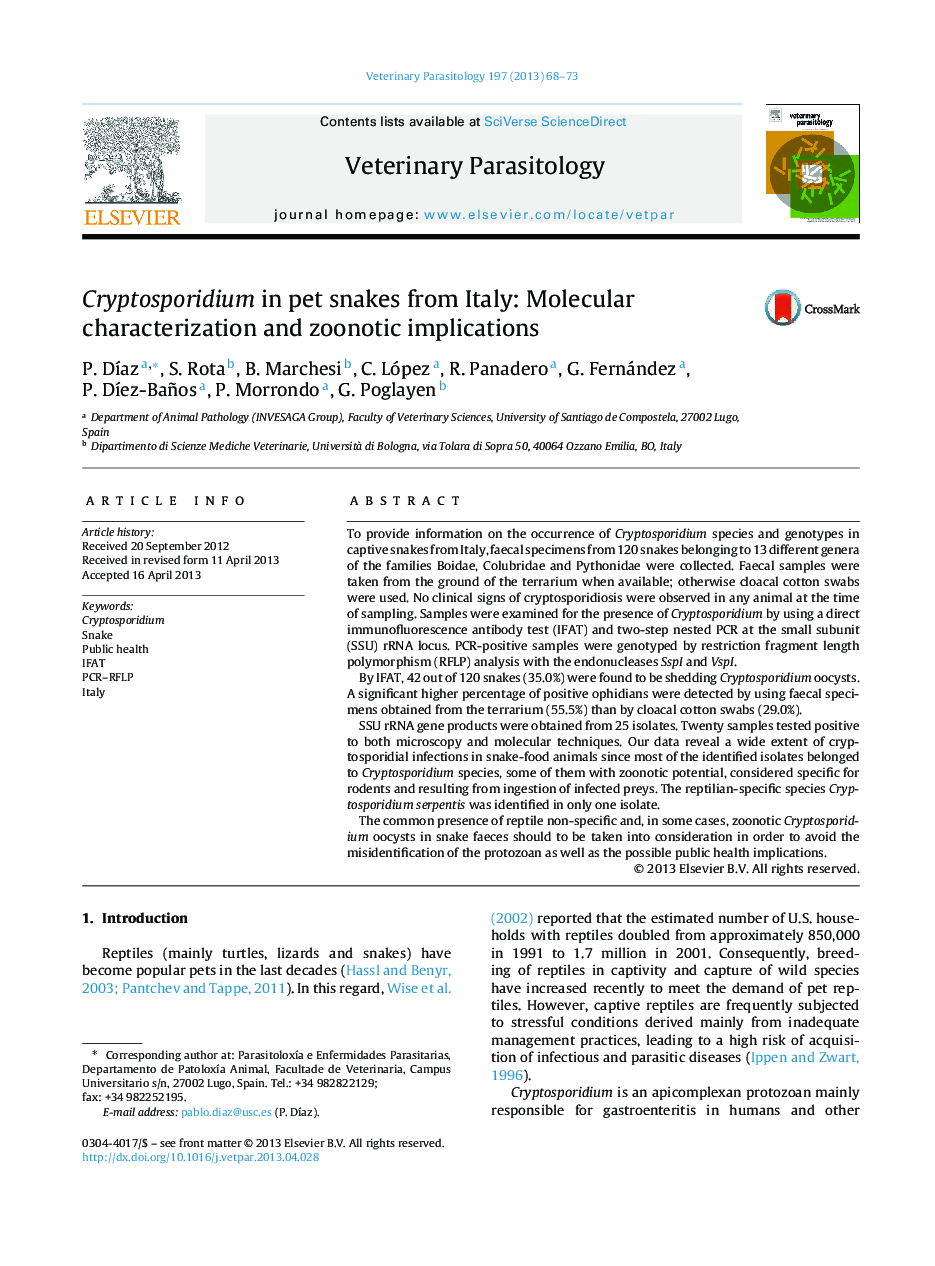| کد مقاله | کد نشریه | سال انتشار | مقاله انگلیسی | نسخه تمام متن |
|---|---|---|---|---|
| 5803584 | 1555697 | 2013 | 6 صفحه PDF | دانلود رایگان |
To provide information on the occurrence of Cryptosporidium species and genotypes in captive snakes from Italy, faecal specimens from 120 snakes belonging to 13 different genera of the families Boidae, Colubridae and Pythonidae were collected. Faecal samples were taken from the ground of the terrarium when available; otherwise cloacal cotton swabs were used. No clinical signs of cryptosporidiosis were observed in any animal at the time of sampling. Samples were examined for the presence of Cryptosporidium by using a direct immunofluorescence antibody test (IFAT) and two-step nested PCR at the small subunit (SSU) rRNA locus. PCR-positive samples were genotyped by restriction fragment length polymorphism (RFLP) analysis with the endonucleases SspI and VspI.By IFAT, 42 out of 120 snakes (35.0%) were found to be shedding Cryptosporidium oocysts. A significant higher percentage of positive ophidians were detected by using faecal specimens obtained from the terrarium (55.5%) than by cloacal cotton swabs (29.0%).SSU rRNA gene products were obtained from 25 isolates. Twenty samples tested positive to both microscopy and molecular techniques. Our data reveal a wide extent of cryptosporidial infections in snake-food animals since most of the identified isolates belonged to Cryptosporidium species, some of them with zoonotic potential, considered specific for rodents and resulting from ingestion of infected preys. The reptilian-specific species Cryptosporidium serpentis was identified in only one isolate.The common presence of reptile non-specific and, in some cases, zoonotic Cryptosporidium oocysts in snake faeces should to be taken into consideration in order to avoid the misidentification of the protozoan as well as the possible public health implications.
Journal: Veterinary Parasitology - Volume 197, Issues 1â2, 18 October 2013, Pages 68-73
